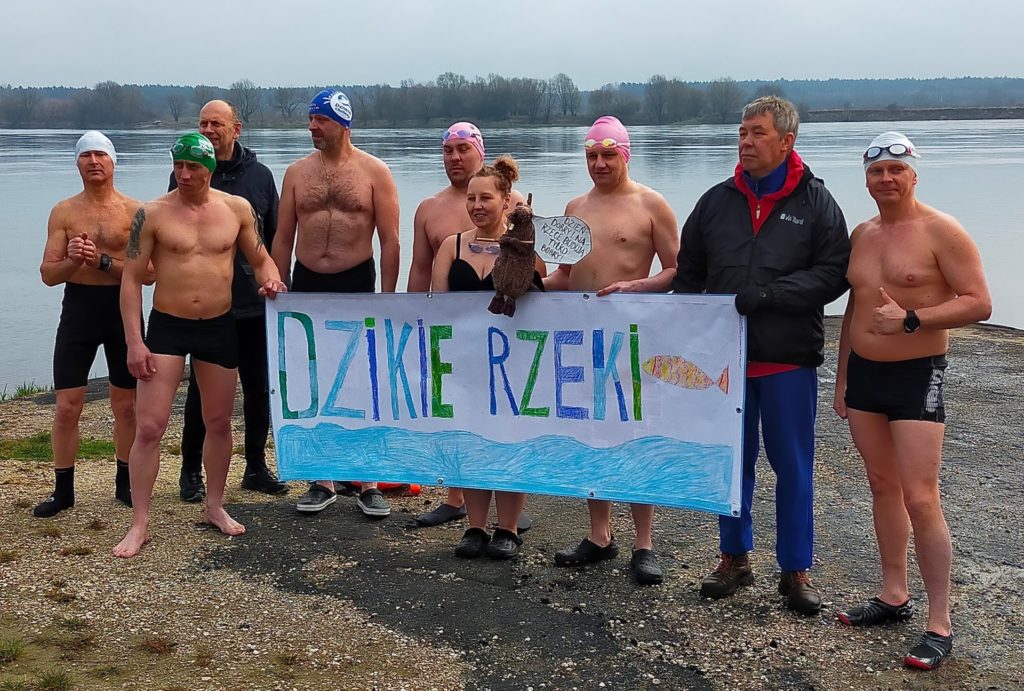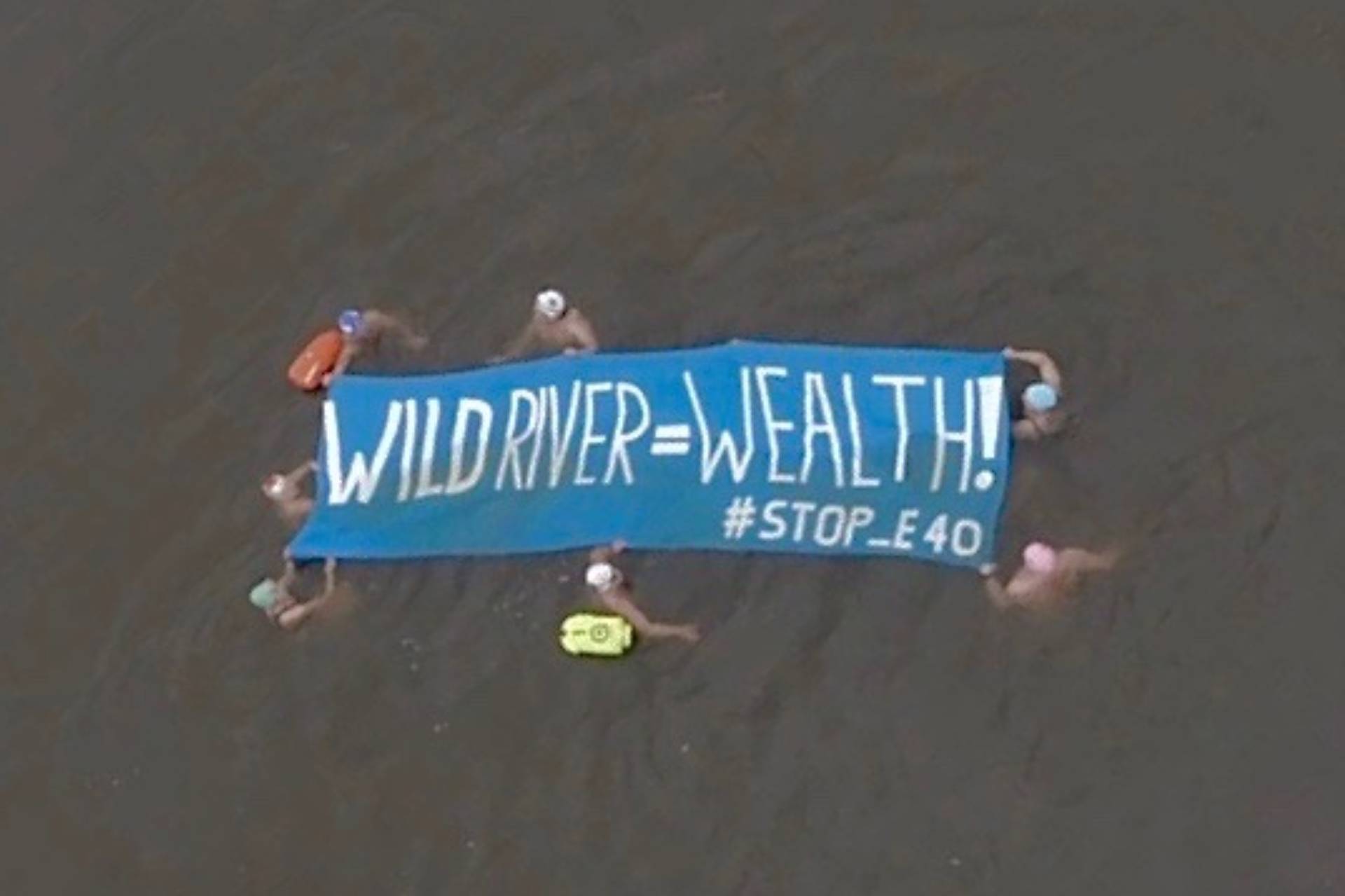About a week ago, a group of swimmers from all over Poland protested against a hydroelectric dam. Their way of protest was remarkable: the activists swam in the eight degrees cold Vistula river near the planned construction site in Siarzewo. The proposed dam would severely impact one of Europe’s last big free flowing rivers, namely the Vistula. And it would be part of the 2,000 kilometres long E40 waterway cutting through Polesia, Europe’s largest wetland wilderness, on a later section of its route.
Leszek Naziemiec, one of Poland’s most famous winter swimmers, organized the protest together with the Silesia Winter Swimming club. The aim of the protest was to raise awareness and ultimately protect the wild and stunning Vistula river. With a length of over 1,000 kilometres, it is Poland’s largest and longest river. Constructing the barrage would cut off the connection with the roughly 70,000 kilometres long upsteam Vistula and its tributaries – posing a real threat to migrating fish.
‘We think that it is a beautiful river and it is worth saving for this beauty. […] We are promoting a return to nature and we need to protest, thus making people aware of what they have, as they often don’t realise what treasures surround them,’
says Naziemiec.
The organizer knows the river very well as he swam along the entire river – from Goczałkowice up to the Baltic Sea.
The public awareness about the benefits of wild rivers is increasing. ‘The happening by Leszek Naziemiec and other winter swimmers shows that society gets aware of and says “NO” to the Siarzewo dam. The loss would be irreversible and highly dramatic if the Vistula river is dammed and channelised as E40 waterway,’ mentions Małgorzata Gorska from the Polish Society for the Protection of Birds (OTOP) with great worry.
‘Not only nature, but we all need wild and free-flowing rivers with extensive floodplains instead of artificial water channels benefitting the hydroelectric powerplant company only.’
adds Gorska.
The event was well-received by journalists and several national media reported about it already. Anja Binder, an environmental scientist from Germany, was participating in the swimming protest and was accompanied by a filmmaker to produce a film about this issue. She was very impressed: ‘It is such a strong commitment to swim in the freezing cold water. Throughout the day, participants arrived from all over Poland – it is obvious that the Vistula river is very close to their hearts. The world needs to get to know about this precious place and the threats it faces.’

Reviving plans of the past era
The Polish government plans to revive an idea of the Lower Vistula Cascade conceived at the beginning of 20th century: the construction of a huge barrage on the Vistula river in Siarzewo is considered as the second step. Numerous environmental organisations from all over Poland – including our Save Polesia partner OTOP, Greenmind, WWF, Klub Gaja and the ‘Save the Rivers’ coalition with its 49 organisations and 34 representatives of informal groups – are criticizing not only the dam’s devastating environmental impacts, but also the lack of economic or social justification. In addition, its construction would breach national and EU laws as several Natura2000 sites would be degraded.
The already existing Włocławek dam, constructed in 1970, was the first step to develop the Lower Vistula Cascade. It led to a diverse range of threats, losses and costs and should thus be removed. This national ‘worst-case example’ should prevent the government from constructing further barrages. Nevertheless, authorities proceed and in mid-march launched a tender for the 4.5 billion PLN investment project for the Siarzewo dam. The construction is due to begin in 2023/24.
Further information:
- Information about the planned Siarzewo dam
- Article about Siarzewo dam from the ‘Save the Rivers’ coalition
- Video statement from Leszek Naziemiec (in Polish)
- Articles in several Polish newspapers, e.g. Pomorska and Wyborcza
- Learn more about Polesia and the threat the E40 waterway poses.
*Top image shows winter swimmers protesting against the Siarzewo dam © Natalie Pusch

